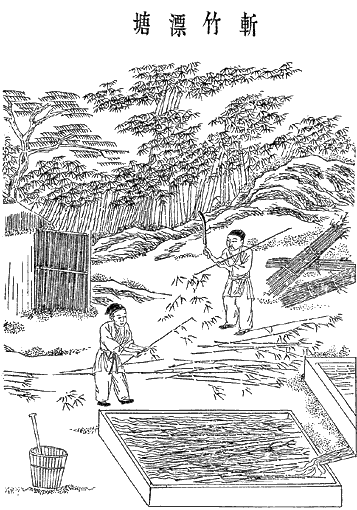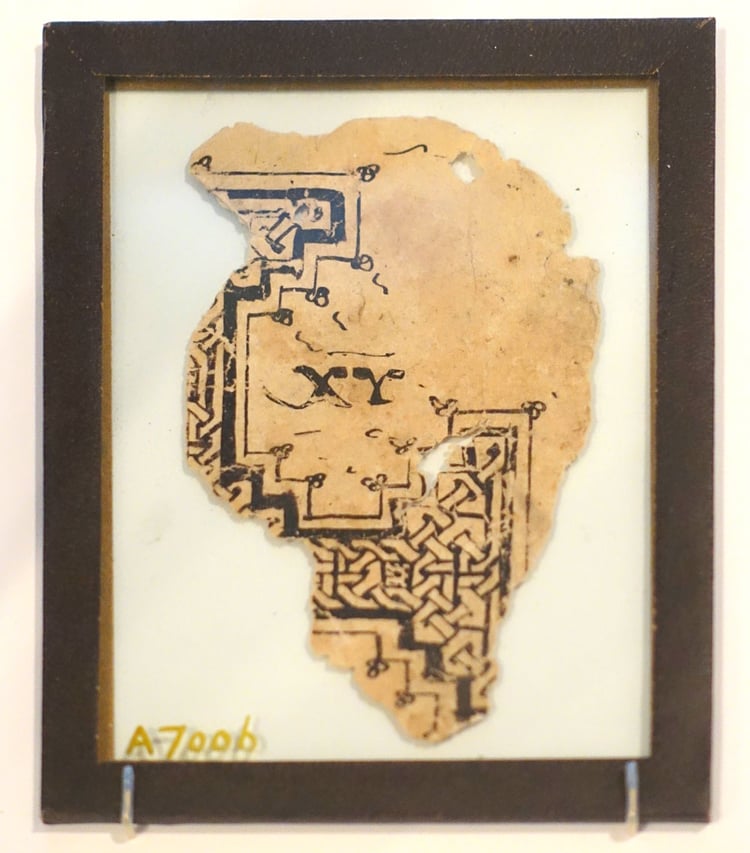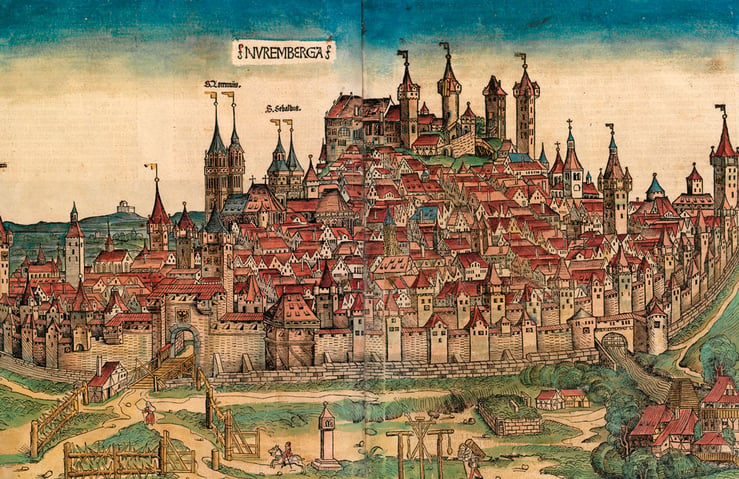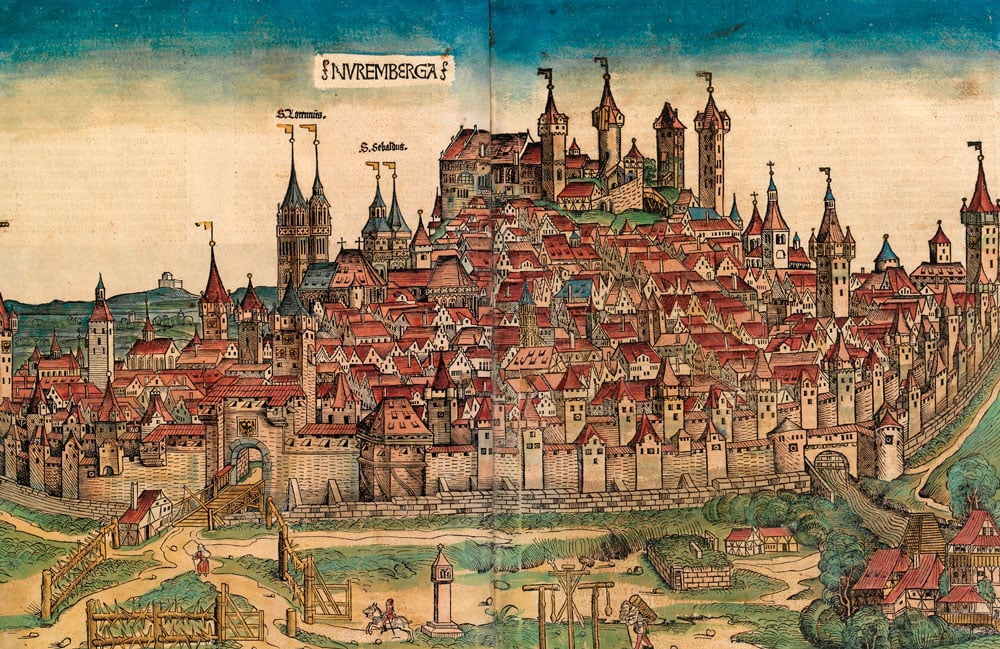Who Invented Paper?
There are many theories as to who and when paper was invented, but the general concensus is that a Chinese gentleman named T'sai Lun was responsible, sometime around 105AD. He was rumored to have been inspired by bees weaving fibers together, which caused him to experiment on his own. Although he was not the first to create a fiberous substrate, he is credited with creating a documented meathod to the art of papermaking.

What Was Early Paper Made Of?
 |
| By Moefuzz - CAMERA, PHOTOGRAPH OF ANCIENT PAPER FROM MY COLLECTION, CC BY-SA 4.0, https://commons.wikimedia.org/w/index.php?curid=50888029 |
| Ancient Sanskrit Manuscript on Hemp Based Paper. |
At its most basic level, paper consists of small fibers that are bound together by getting them wet and then drying them again. At the time, these fibers were hard to come by. This meant paper was made entirely from recycled fibers like rags and cotton. As time went on, the early innovators figured out how to shred plants like hemp and bamboo into fibers that could be made into paper.
Paper reduced much of China's domestic need for silk, which was much more expensive than paper. This allowed them to export silk to Europe, which was hungry for such luxuries. This contributed to a Chinese "Golden Age."
What Was the Arab Contribution to Paper?
 |
| By Daderot - Own work, CC0, https://commons.wikimedia.org/w/index.php?curid=41349533 |
| Page fragment from a Bible in the Coptic language, From Egypt in the Islamic period, 700s AD or later |
In the 8th Century, Arabs recognized the value of paper, but were challenged by the lack of consistency in the writing surface. The early Chinese papers had a rough surface that was better suited to brush strokes than much else. It was really soft and absorpant
Determined to make a better paper, Arabs decided to add "sizing." This combination of starch and other additives allowed ink sit on top of paper fibers, rather than penetrate the paper. It also improved the brightness and strength of the material. This made it much easier to write on, and also much more durable.
Another major contribution by the Arab world was the first truly industrial paper mill. This facility was capable of producing consistent sheets that were thicker than those produced before it. Many credit this as the point where papermaking began the transition from an art to an industrial process.
When Did the Western World Start Using Paper?
 |
| By Michel Wolgemut, Wilhelm Pleydenwurff (Text: Hartmann Schedel) - Own work (scan from original book), Public Domain, https://commons.wikimedia.org/w/index.php?curid=872178 |
| The Nuremberg paper mill, the building complex at the lower right corner, in 1493. Due to their noise and smell, paper mills were required by medieval law to be erected outside of the city perimeter. |
By the 13th century, the knowledge and use of paper had traveled to Europe. Water powered paper mills mechanized its production. This reduced the the cost and spread its use - but production was limited by the rags that the mills were able to recover.
In 1680, paper got its first major upgrade in nearly 500 years. Although Chinese used bamboo to make paper, but there was never a good, mechanized way to extract the fibers. This problem was solved when the Dutch invented the Hollander Beater. This machine made the extraction of fibers from plant based materials efficient. It allowed new "virgin" fibers to be included in the paper making process. Although this did not replace "rag paper" it did help out with improving the sources of fibers.
Another hundred years later, in 1774, German jurist Justus Claproth invented paper recycling. Extracting fibers from existing paper was not a problem, but removing ink (or "de-inking") paper that had been previously printed was. "De-inking" is still widely considered whenever a new ink or printing technology is developed.
By 1800, paper makers had discovered that that the raw materials for paper making could be an agricultural industry. Fibrous crops, such as flax were grown in some cases to provide the first consistent supply of raw materials to paper mills. This was an improvement, but really expensive. These crops provided fiber, but it was not dense fiber.
Things started to get exciting in the world of paper between 1800 and 1850. First was the "mechanical pulping process" where forestry products are manufactured into paper pulp. This meant that rather than harvesting flax, trees were able to be used for making paper. The yields were astounding. Second was the Fourdrinier Machine, a continuous paper making machine. Since trees can be easily grown in many parts of the world, and factories can be placed near forests, these innovations significantly reduced the amount of time and cost required to make paper.
Since 1850, many incremental innovations have evolved the paper making process. Pulp is made largely from a chemical process now, and many additives have been developed to make papers brighter and smoother.
I hope you enjoyed learning about the history of paper. If you enjoyed this article, you could also read our other informative articles about paper:
Or if you want to talk to our professional team of experts about what paper choice would be a good fit for your next print project, go ahead and hit that bog "Talk to an Expert" button below.


